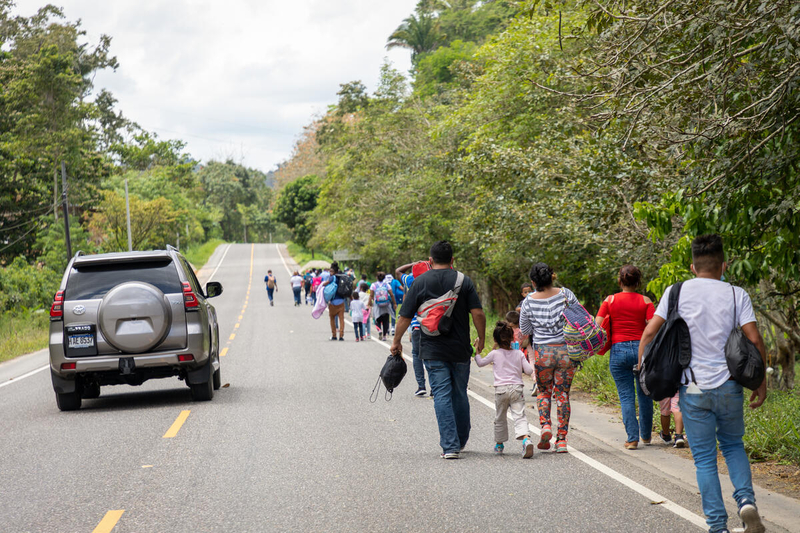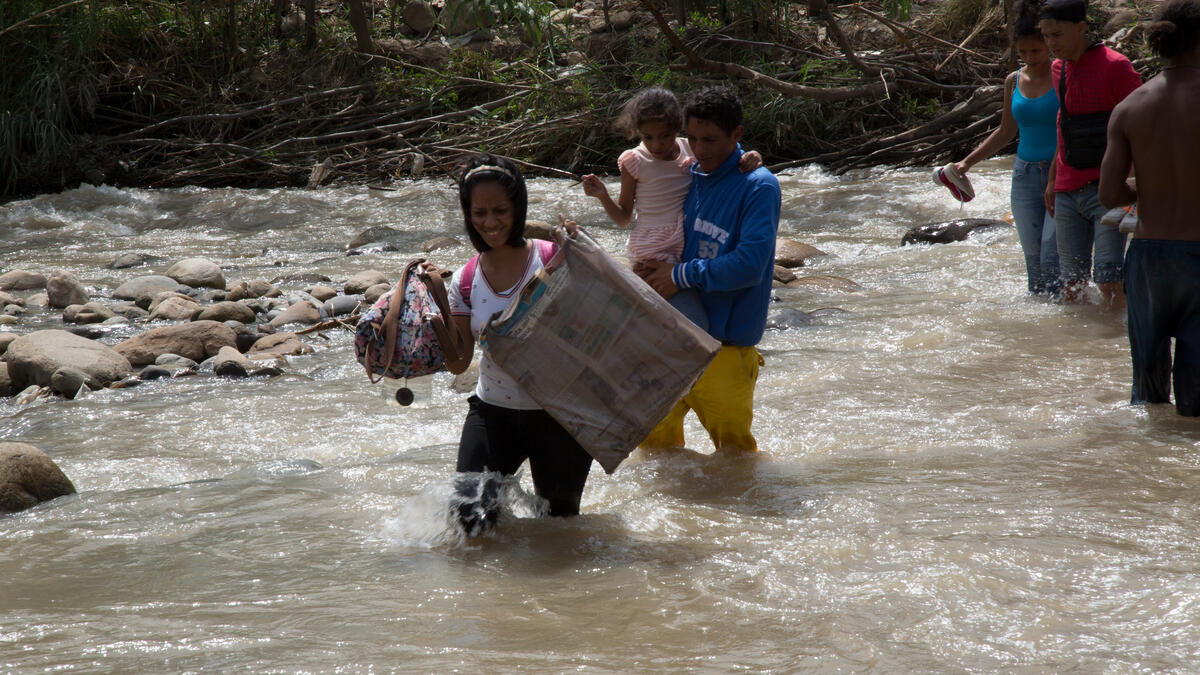Hunger, Poverty, Climate Shocks and Threat of Violence Force Hundreds of Thousands of Families From Their Homes in Central America

When home is no longer safe and food is out of reach, families may embark on the arduous trek across unknown terrain—bringing only what they can carry. To mark International Migrants Day, we’re sharing the findings of a new report on Central American migration and the factors that may push a family to leave all they know behind.
Driven by rising hunger, poverty, climate shocks and the threat of violence, families are making hazardous journeys to reunite with loved ones and find safety. Over the last five years, a new report found that an estimated 378,000 people have made their way to the United States every year.
The Quick Rundown
- In Central America, hungry people are three times more likely to make plans to migrate than people who have enough to eat.
- The effects of poverty and COVID-19 have magnified levels of hunger in the region and made it harder for families to access nutritious food.
- Social protection programs like cash grants and school meals play a key role in empowering people to weather economic and climatic shocks over the long-term.

The new report is a joint effort of the Migration Policy Institute (MPI), the U.N. World Food Programme and the Civic Data Design Lab at the Massachusetts Institute of Technology, with support from the Inter-American Development Bank and the Organization of American States (OAS).
Hunger on the Rise
The new study on Central American migration titled “Charting a New Regional Course in Action” confirmed hunger as one of the propellers of migration from Central America, noting that food insecure people are three times more likely to make concrete plans to migrate than those who are better off.
“We are seeing an exodus … as hunger and despair force many to migrate in search of a better life,” said United Nations World Food Programme (WFP) Executive Director David Beasley.
“Families are being separated and communities are being destroyed as poverty, climate change and now COVID-19 have left many people feeling they have no choice but to head north.”

Venezuelans making a hazardous crossing across the border into Colombia in 2018.
Hunger has seen a dramatic rise in Central America as persistent poverty levels and the economic fallout of COVID-19 make it harder and harder for families to access nutritious food. As of October 2021, the U.N. World Food Programme estimated that the number of hungry people in El Salvador, Guatemala and Honduras grew three-fold—from 2.2 million people in 2019 to 6.4 million in 2021.
Interlinked Drivers of Migration
The report also identified poverty, climate shocks and the threat of violence as the interlaced factors driving people to migrate out of Central America:
- Poverty: Low wages, unemployment and insufficient income were identified as push factors for migration as well as the major obstacles to starting the migration journey.
- Threat of Violence: About one in five residents of Guatemala, El Salvador and Honduras report being the victim of crime every year.
- Climate Shocks: Households in Central America have borne the brunt of extreme weather events, from a devastating drought in 2018 to the twin Hurricanes Eta and Iota in 2020.

55 percent of migrants reported hiring a smuggler at an average cost of $7,5000 per person. This amounts to an estimated $2.2 billion a year, with 89 percent of respondents intent on reaching the US.
The Solution: Tackling the Root Causes of Migration
Social protection programs play a critical role in alleviating poverty and empowering people to weather economic and climate shocks over the long term. Cash-based support to address income inequality, school meals to address rising hunger levels and agricultural programs that build resilience to climate shocks are all social protection mechanisms that address the conditions that could push a person to migrate and are programs the U.N. World Food Programme is already supporting in Central America.
“We know they would much rather stay home, so the U.N. World Food Programme’s programs are supporting sustainable livelihoods and offering people hope and opportunity in their own villages,” said U.N. World Food Programme Executive Director Beasley.
This story originally appeared on WFP’s Stories on November 23, 2021. To read the full report, click here.




